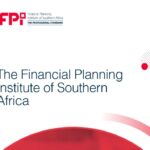PortfolioMetrix was one of the pioneering South African DFM firms. Does the rise of new DFMs validate your original thinking?
PortfolioMetrix (PMX) was launched in 2010 because we saw gaps in the market that others overlooked. Back then, the DFM model wasn’t mainstream and we had to challenge conventional wisdom. Today, DFMs are launching at an eye-watering pace, but many are driven more by fear of missing out than deep strategic insight. Whether the trajectory is sustainable remains an open debate.
What opportunities did you identify in 2010?
At the time, the asset management industry was mature with entrenched incumbents and strong brand power. Disruption required a keen eye for what was missing. Asset managers were pushing products, while advisors needed solutions. IFAs were treated as a distribution channel, but what they wanted were strategic partners. Relationships needed to move from transactional to holistic. The industry also
failed to recognise how rapidly financial advice was evolving, leaving traditional distribution models ripe for disruption.
PMX is a DFM with an extremely strong investment management track record. Is there room for another asset manager?
DFMs managing client money are investment managers. Regardless of the peripheral services they offer, their investment track record must hold up against all alternatives, net of all fees. Clients don’t pay DFM fees for an advisor’s compliance system, they pay for investment outcomes. While value-add services matter, they only make sense if the proposition is competitive.
What makes PMX different from an investment perspective?
When PMX launched, the industry was fixated on star managers with high-conviction strategies and portfolios with unstable risk characteristics. These funds were difficult to integrate into a structured advice process, leading to erratic client behaviour and poor decision-making. We rejected the trade-off between short-term consistency and long-term performance, recognising that a disciplined approach could deliver both. Consistency compounds over time, improving both the client journey and the advisor’s role. We build portfolios with clear purpose, combining both the precision of science and the art of design.
Who is your ideal client?
We work best with top-tier advisory firms and professionals who share a common vision and face similar challenges. Top advisors aspire to build financially successful businesses and achieve professional excellence and focus on what they enjoy the most. Like all specialists, they seek resilient, respected businesses with the freedom to make their own choices. Yet, they’re often held back by non-core tasks, the workload of managing client portfolios and inconsistent investment performance, which shifts focus away from key client conversations. PMX helps clear the runway.
What do advisors really get from partnering with PMX?
PMX removes obstacles, empowering advisors to focus on what matters most – delivering an exceptional client experience while achieving their business and professional aspirations. Validation is straightforward. PortfolioMetrix delivers consistent, market-leading investment outcomes and has been recognised globally for investment performance, WeathExplorer™ technology, best DFM services, best risk profiling service and best client service.
Our advisor community speaks for itself – many of them are Advisor of the Year and Practice of the Year winners and a large proportion of top contenders use PMX technology to build
their submissions.
Some argue DFMs are just an extra layer of cost. Your response?
A fee is only a cost if it doesn’t translate into value. It’s more intellectually sound to add up total costs rather than count “layers”. Whether bundled into a single manager fee or separated across multi-manager and fund fees, clients ultimately pay for asset allocation, selection, portfolio construction and monitoring. The key is comparing total cost vs net outcomes. With nearly R100-billion AUM, we have significant pricing power and NMG’s DFM survey shows that our underlying manager costs are less than half the industry average.
Should DFMs be ranked in performance tables like fund managers?
Yes, but with caveats. Comparing competing investment propositions is crucial, but large CIS fund managers (eg Allan Gray, Coronation, Ninety One) often face a disadvantage relative to DFMs submitting only model portfolio returns. Many industry awards and performance surveys fail to apply basic GIPS (Global Investment Performance Standards) principles, allowing for cherry-picking, opaque methodologies and unverified numbers. The key is transparent, independently verified rankings, ensuring a level playing field across DFMs and asset managers.
What will be the biggest challenges facing DFMs in the next decade?
Many DFM models are unsustainable and already show signs of strain. The entire market may benefit from DFM-like functionality, but it’s less clear that traditional DFMs will remain the dominant providers of these solutions. Expect creativity and competition as alternative investment integration models emerge. Many firms need support but don’t necessarily need a traditional DFM structure – but they do need something. At the same time, mainstream asset managers won’t go quietly into the night. DFMs will have to work harder to prove their investment credentials, while traditional managers will continue evolving from product providers to solutions businesses.
Final thoughts?
PortfolioMetrix was founded on the principle that investment management and financial advice must work in tandem. As the industry evolves, success won’t be measured just by performance charts or service layers, but by the ability to help advisors build stronger businesses, keep clients invested and deliver truly differentiated value.













